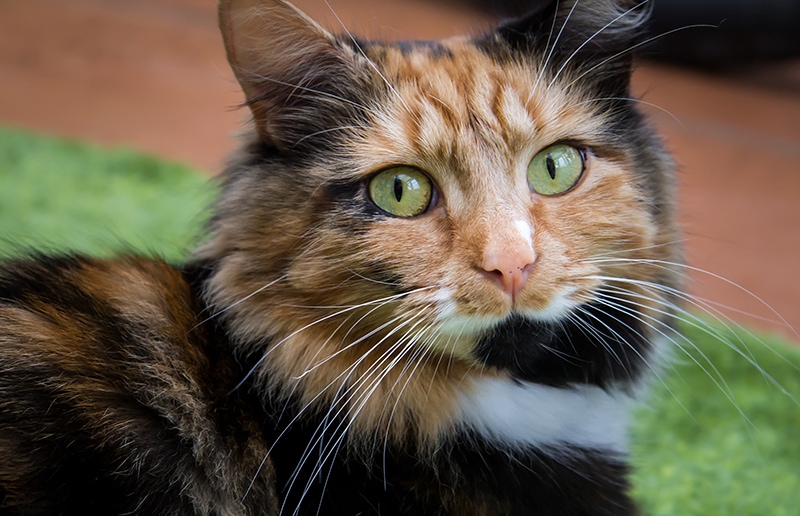How to Train Your Kitten to Use the Litter Box: Expert Advice, Tips & Tricks

Updated on
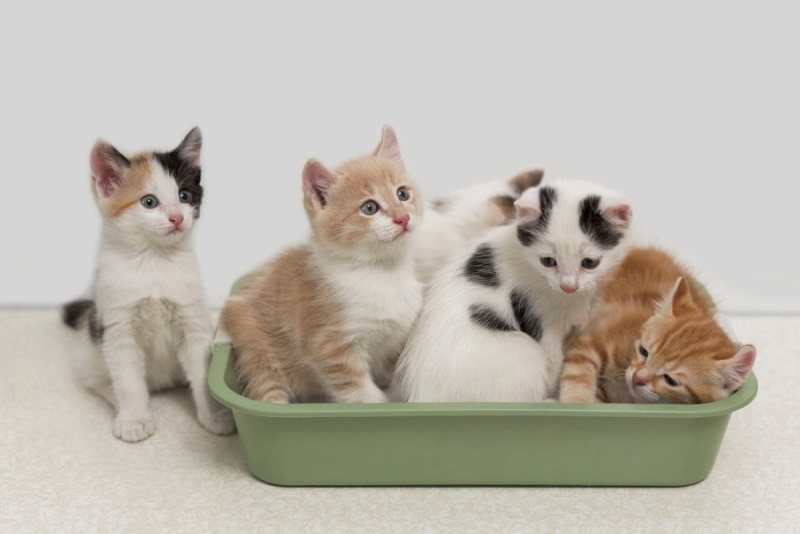
Click to Skip Ahead
There’s nothing more exciting than having a new kitten join your household! But what isn’t as exciting is the thought of having to train your kitten to use the litter box. You may be wondering, “Well how long is that going to take? Where should I even put a litter box? What supplies do I need? What if they don’t want to use it?”
But the thing is, training your cat to use the litter box actually isn’t that difficult. Cats have a bit of a natural instinct when it comes to relieving themselves. Sometimes they learn from their mother and sometimes they figure it out by themselves. But the bottom line is that they want to go somewhere where they can cover it up.
However, if you’ve got a brand-new kitten or one that is having trouble figuring it out on its own, they may need a little extra help from you. That’s where we come in. We’ll tell you everything you need to know about litter training your cat so that you can have them using the litter box in no time.
When Do Kittens Start Using the Litter Box?
The first thing you should know about litter training a kitten is that they won’t typically start using the litter box until they are a certain age. So, if you’ve found a newborn kitten that was abandoned and brought them home with you, or your mama cat just had babies, they may not use the litter box right away.
Most kittens start using the litter box around 3 weeks of age, when they are strong enough to get in and out of the litter box by themselves. But even at 3 weeks old, they can’t use just any type of litter box or cat litter.
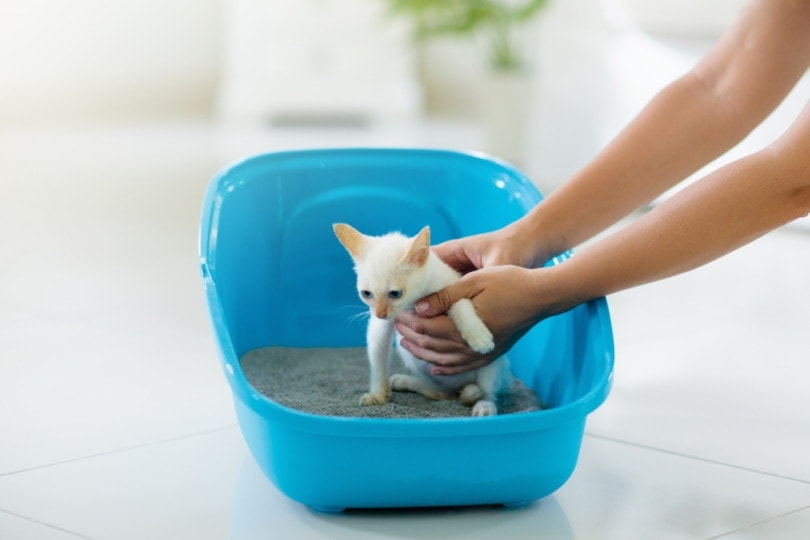
Kittens that are that small should be provided with a litter box that has low sides. This will ensure that they can get over it without any trouble. You should also only use sand or wood-based litter with kittens that are that young, as clay litter may contain chemicals that could harm them.
If kittens have a mother cat to guide them, they should learn to use the litter box on their own by watching her. But if they don’t, then you may have to be the one to teach them. To do this, place the kitten in the litter box and use their paw to scratch at the litter. Then, gently massage their bottom with a wet cotton ball to encourage them to pee.
You may have to do this several times before your kitten gets the hang of it and realizes that’s where they’re supposed to go. It’s important that you don’t clean the litter box after each time they go. This will help them to find their scent, which will encourage them to use the litter box on their own.
How to Litter Train Your Kitten
If you don’t have your kitten from birth and instead get them when they’re a little older, they should already have an idea about using the bathroom and covering it up afterward. But obviously, when bringing them into your home, you want them to develop a new habit of using the litter box so that they aren’t going wherever they please. It shouldn’t be too difficult as long as you have the right supplies.
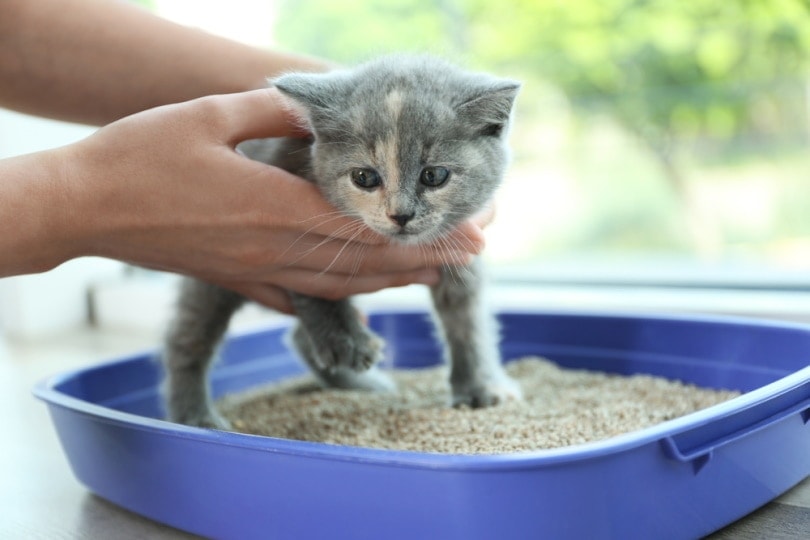
Before You Begin
There are a few things you’ll need before you can begin litter training your kitten:
Litter Box
There are different styles and shapes of litter boxes, so it can be hard to choose. For example, there are litter trays and then there are covered litter boxes. Litter trays are easier to clean, while covered litter boxes offer your cat more privacy. Whichever style you choose is really up to your preference. Just make sure that the edges of the litter box are short enough for your cat to get over them easily.
Litter
If you thought there were a lot of litter boxes to choose from, just wait until you see all the different types of cat litter. Cat litter comes in scented and unscented varieties and is typically made from either clay, wood pellets, or paper. When choosing a cat litter, it’s best to start with an unscented, clumping cat litter.
Clumping cat litter is easier to clean, and your cat will be more likely to use it if it is unscented. Unscented litters are also safer until you know whether or not your cat is going to have any allergies or sensitivities. Once your cat gets used to using the litter box, you can always try out different types of litter to find what works the best for both you and your cat.
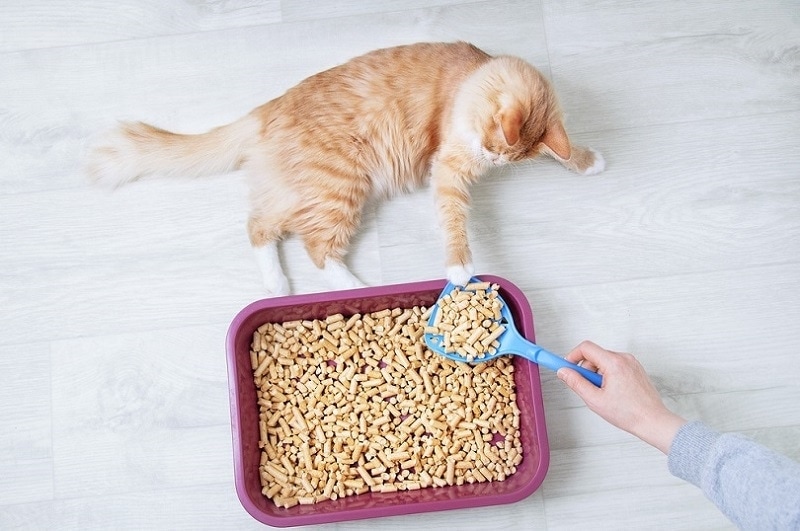
Cleaning Supplies
You’ll also want to purchase cleaning supplies, such as a litter scoop, at the very least. However, you shouldn’t clean the litter box for the first couple of days of litter training so that your cat can find it more easily.
You may also want to purchase a pet stain remover in the event of any accidents. There are also plastic liners that you can put into the litter box. These make changing the litter super convenient, but they aren’t a necessity. It’s just up to your personal preference.
Treats
Finally, you’ll want to purchase treats. If you reward your cat for using the litter box, it will encourage them to keep using it because they know they’ll get a yummy treat afterward. Once your cat has gotten the hang of it, you can wean them off of the treats.
Preparation
Once you’ve got all the supplies, you’ll want to set the litter box up in a place where your cat will want to use it and feels safe to use it. Set it up in an area where your cat can find it easily but isn’t exposed while using it. If your cat feels exposed, they’re less likely to use it. Usually, a bathroom or laundry room are the best places to put a litter box.
If you purchased plastic liners, put one of them in the litter box first. Then, fill the litter box about halfway full of litter. If you bought a covered litter box, you’ll probably want to leave the lid off it at first until your cat gets the hang of using it.
Training Your Cat
Now it is time to train your cat. Follow these steps:
Show your cat the litter box after you finish setting it up. Place your cat into the litter box so that they can sniff it and become familiar with it. They may or may not use it the very first time you put them in it.
Place your cat into the litter box occasionally, especially after they wake up from a nap or finish eating. They’re more likely to have to use the bathroom at this time. Pay attention to any signs of your cat having to go to the bathroom, such as sniffing around a certain area.
Give your cat a treat immediately after using the litter box. If you don’t do it immediately, your cat may not recognize what the treat is for. Don’t punish your cat for not using it or for going somewhere else. Your cat won’t know what they’re being punished for, and it may even cause them to have anxiety about using the litter box.
By following these steps, your cat should be litter trained in no time. If you’re still having trouble, your cat may not like the litter or the location of the litter box. You may have to try out different types of litter or put the box in different locations until they find one that is suitable.
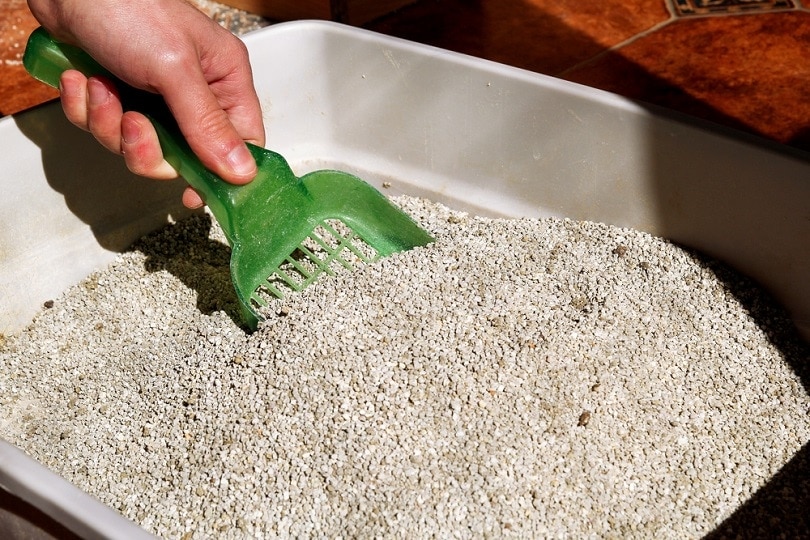
Cleaning the Box
Regularly cleaning the litter box is important for both making sure your cat continues to use it and helping to eliminate any unpleasant odors from your home. The litter box should be scooped every other day at the very least, but if you can smell it, it is definitely time to clean it.
It is recommended to scoop solid materials from the litter box daily and change the litter completely every 1 to 2 weeks or when it stops controlling odors. When changing the litter, it’s a good idea to wash the litter box out with mild dish soap and water to remove any lingering odors. Let the litter box dry completely before adding fresh litter.
What if My Cat Stops Using the Litter Box?
There are several reasons why your cat might suddenly stop using the litter box, most of which aren’t a cause for concern. We’ll offer our suggestions for how to remedy this situation. But if none of them work, it could be a sign of a health issue.
The Litter Box Needs to Be Cleaned
One of the most common reasons that your cat suddenly stops using the litter box is that it needs to be cleaned. Cats are generally very clean creatures, so they may refuse to use the litter box if they feel it is too dirty or they don’t have room to go. Keeping to a regular cleaning schedule can help prevent this.
They Don’t Like the Litter/Box
As cats get older, their preferences might change. Even if you’ve used a particular type of litter for years, your cat may suddenly grow tired of it. Or, they could have an allergy or sensitivity to certain types of litter.
Your cat may also stop using the litter box because they have a hard time getting into or out of it. This may happen as cats age or gain weight and aren’t as mobile as they once were. They may also feel too exposed when using the litter box, so switching to one that’s covered could solve this problem.
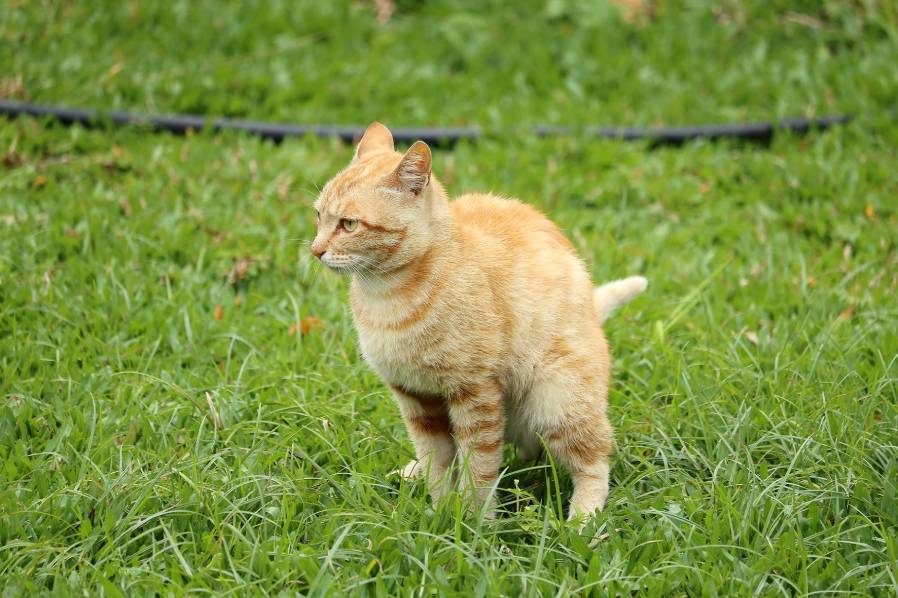
They Don’t Like the Location of the Litter Box
If you’ve moved the litter box suddenly, your cat may stop using it because it isn’t what they’re used to or they can’t find it. If you do need to move it, move it only a few inches at a time so that your cat doesn’t have trouble finding it and so that it isn’t too much of a change.
The location of the litter box also may not be private enough. It could be in a noisy area or an area that is too out in the open. They may not feel comfortable using the litter box if they feel unsafe while doing so.
Health Problems
If you’ve tried all of the above and your cat still won’t use the litter box or is going somewhere else, they could be suffering from a health problem. For example, cats that have been declawed may not use the litter box after the declawing surgery because their paws are more sensitive and it causes them pain. They begin to associate that pain with the litter box even after their paws have healed.
Your cat could also be suffering from a kidney infection, kidney disease, or other health issues. This especially happens in cats that are older, but it can happen in younger cats too. Sometimes, the problem isn’t that they don’t want to use the litter box, they just don’t make it in time. Other times, using the litter box could be uncomfortable. If you suspect your cat is suffering from a health issue, it is best to talk to your vet for a proper diagnosis and treatment.

Conclusion
Training your kitten to use the litter box isn’t that difficult once you know what you’re doing and you have the right supplies. Cats are smart animals and it shouldn’t take them long to figure out what to do. But sometimes, cats can be picky. If they are struggling, you may have to try making changes to the type of litter, the box itself, or the location of the box until you find what works best for your cat.
Featured Image Credit: Albina Tiplyashina, Shutterstock



